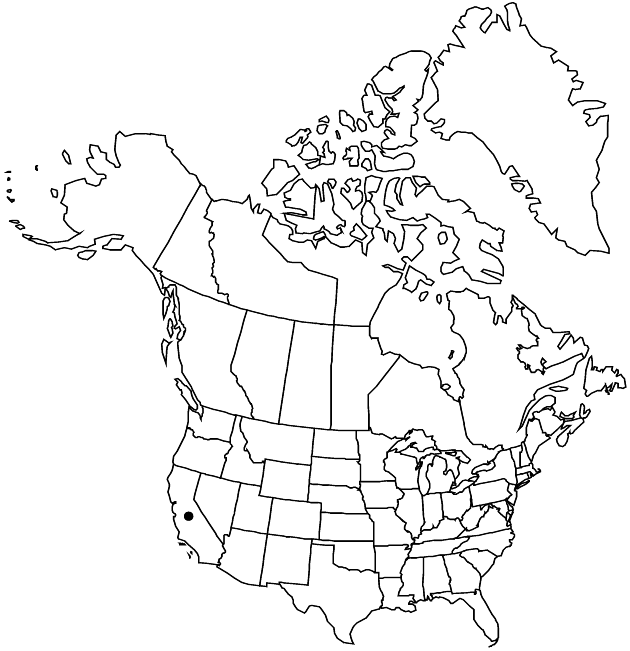Madia subspicata
Publ. Carnegie Inst. Wash. 564: 45. 1945.
Plants 5–60 cm, self-compatible (heads not showy). Stems proximally ± villous, distally glandular-pubescent, glands yellowish, lateral branches not surpassing main-stems. Leaf-blades linear to lance-linear, 2–7 cm × 1–5 mm. Heads in spiciform or spiciform-racemiform arrays (peduncles 0 or lengths usually less than 2 times heads). Involucres globose or ovoid, 6–8 mm. Phyllaries ± hirsute and thick-stalked-glandular as well, glands golden yellow, apices ± erect, sulcate or flat. Paleae mostly persistent, distinct or connate less than 1/2 their lengths. Ray-florets 5–8; corollas pale-yellow, laminae 1–2.5 mm. Disc-florets 5–15, bisexual, fertile; corollas 3–3.5 mm, pubescent; anthers yellow to brownish. Ray cypselae black or brown, sometimes purple-mottled, dull, compressed, ± clavate, beakless. Disc cypselae similar. 2n = 16.
Phenology: Flowering Apr–Jun.
Habitat: Grasslands and open woodlands, often in shade
Elevation: 50–800 m
Distribution

Calif.
Discussion
Madia subspicata occurs locally in the central and northern Sierra Nevada foothills, sometimes with the morphologically similar M. gracilis.
Selected References
None.